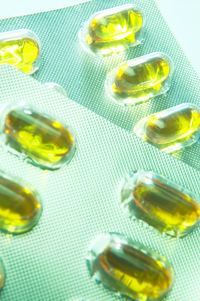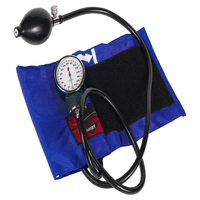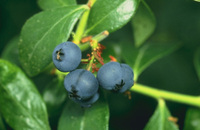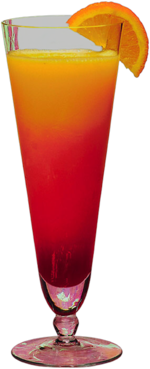Empowerment

It is sometimes frustrating to see peoples’ medical problems reduced – incorrectly – to a single factor. Worse yet, failing to see that all the systems of the body, the mind, our relationships, environment and spirituality all have a part to play in the maintenance of our health and the treatment of disease.
I grew up in England and benefited from and then trained and worked in the National Health Service. Which is nothing of the sort: it is a disease management service.
The problem lies not with money or inefficient systems, but with an emphasis on management rather than prevention of disease.
The next revolution in healthcare is not being driven by science and technology, but by empowerment: being given the tools for taking personal responsibility for our own health and well-being.
Not just so that we feel better and may have the chance of avoiding costly medicines, but so that we can grow as individuals.
The ultimate goal of any form of personal development, of psychotherapy and indeed of medicine, is to remove restrictions from people.
Freedom unlocks human potential.
We are inundated with information about health. Much of the information is confused and confusing. Integrated Medicine is based on the idea of integrating different approaches and integrating the different parts of a person and all of his or her relationships form cell to soul.
The key to that is understanding how to fit all the pieces together, whether a person is a Buddhist or a Baptist, a meat-eater, vegan or junk food addict. To be able to answer these kinds of questions:
- What diet is right for me personally?
- What type of exercise should I do at my age, level of fitness and time constraints?
- How can I get the quality sleep that I need with all the demands on my time?
- How can I manage the stress in my life?
- How can I manage my emotions so that I run them instead of them running me?
- How can I have satisfying connections with other people?
- How can I find my meaning and purpose in life?
The good news is that we already have answers to most of those questions and we have developed hundreds of tips and techniques that people can do in minutes a day.
I revealed some in the book and CD series Healing, Meaning and Purpose, and in response to a great many requests, I shall be sharing many of these techniques in the months to come.
“Health is a state of complete harmony of the body, mind and spirit. When one is free from physical disabilities and mental distractions, the gates of the soul open.”
–B.K.S. Iyengar (Indian Yoga teacher, 1918-)
“If we could learn how to balance rest against effort, calmness against strain, quiet against turmoil, we would assure ourselves of joy in living and psychological health for life.”
–Josephine L. Rathbone (American Sports Physiologist and Pioneer in Health and Relaxation, 1899-)
“Personal transformation can and does have global effects. As we go, so goes the world, for the world is us. The revolution that will save the world is ultimately a personal one.”
–Marianne Williamson (American Author, Unity Church Minister and Lecturer on Spirituality, 1952-)
“Questions focus our thinking. Ask empowering questions like: What’s good about this? What’s not perfect about it yet? What am I going to do next time? How can I do this and have fun doing it?”
–Charles Connolly (American Psychologist)
Non-pharmacological and Lifestyle Approaches to Attention-Deficit/Hyperactivity Disorder: 2. Nutritional Supplements

It sometimes surprises people to learn that the FDA does not currently regulate the production of supplements and herbal products. Therefore their purity and contents may vary considerably. Though most of them are fine, there have been endless examples of supplements that contained no active ingredients or were adulterated with heavy metals or prescription medicines.
Amino Acid Supplementation
The idea of using amino acid supplementation is based on reports of low levels of amino acids in ADHD, including the particular amino acids – tyrosine, phenylalanine and tryptophan – that are the building blocks of catecholamines and serotonin.
Several open and controlled studies in both adults and children have reported a short-term benefit from tryptophan (precursor of serotonin), tyrosine (precursor of catecholamines), or phenylalanine (precursor of catecholamines) and S-adenosyl-methionine supplementation.
However, no lasting benefit beyond 2–3 months has been demonstrated: both children and adults develop tolerance. Even short term, there is a lot of dispute about whether these supplements work at all.
Vitamins
Three strategies for vitamin supplementation are:
- Recommended Daily Allowance (RDA) multivitamin preparations
- Megavitamin multiple combinations
- Megadoses of specific vitamins
The first is not controversial, although there is always a discussion about whether the RDA’s is correct. There has not been any credible research on the effects of his kind of supplementation in diagnosed ADHD even though some reports suggest mild deficiencies in diet and blood levels. There is some evidence that micro-nutrient supplementation will help the intelligence and ability to concentrate in children without ADHD, but whether the same holds in ADHD, we simply do not know.
The second strategy, megavitamin multiple combinations, has not been found effective in double-blind placebo-controlled short (2 weeks) and longer (up to 6 months) trials in ADHD and the related comorbidity of learning disorder, although it is always possible that the researchers did not use the correct mixture of vitamins and minerals.
As things stand megavitamin combinations do not seem worth pursuing for children or adults, and some may be risky.
The third strategy, the use of single vitamins in huge doses to alter neural metabolism has not been explored despite some encouraging early reports.
Minerals
Deficiencies of iron, zinc, and magnesium have been noted more commonly among children with ADHD than among normal children.
Iron
Iron is a coenzyme involved in the synthesis of catecholamines, so there has been a lot of interest in iron deficiency as a possible cause of a number of neurocognitive problems. Iron deficiency may be due to poor diet, celiac disease, excessive milk ingestion, infection, gastrointestinal losses or lead. And of course in adults, many women are chronically iron deficient. Children with ADHD may have lower iron stores and in a study of nearly 100 children, there was a significant inverse correlation between ferritin levels and scores on a standard ADHD rating scale.
Zinc
Zinc is a co-factor for 100 enzymes, many involved in neural metabolism. It is also necessary for fatty acid absorption and for the production of melatonin, the light–related hormone that helps regulate dopamine function. Zinc is so important for the normal functioning of the brain that it is plausible that deficiency would adversely affect behavior and that restoring optimal levels may provide some benefit.
Zinc has been found to be lower in some children with ADHD. In a study of 44 children with diagnosed ADHD, zinc had a significant inverse correlation with attention, even controlling for gender, age, income, and diagnostic subtype. In large randomized, controlled trial, children given zinc sulfate (150 mg/day) or placebo, the zinc-takers had significantly more improvement for impulsive behavior and socialization; the best response was observed in those children who had low zinc levels to begin with. We do not know if using mega-doses of zinc will confer any benefit.
Magnesium
Magnesium deficiency can cause a wide spectrum of neurological and psychiatric disturbances and can result from a many factors including increased requirement during childhood.
In one study, 30 out of 52 children with ADHD had low levels of magnesium in their red blood cells. An open-label study supplementing them with 100 mg daily of magnesium and viamin B6 for 3-24 weeks led to reduced symptoms of hyper-excitability (physical aggression, instability, attention to school work, muscle tension and spasms) after 1 to 6 months of treatment.
Conclusions
It is usually just enough to ensure that children with ADHD have a decent diet. But in some it may be necessary to take supplements to ensure that they are getting an adequate dietary intake of iron, zinc, and magnesium.
Other Supplements
Essential Fatty Acid Supplementation
The membranes of nerve cells are composed of phospholipids containing large amounts of polyunsaturated fatty acids, especially the n-3 and n-6 (or omega-3 and omega-6) acids. What these terms mean is simply that the first unsaturated bond is 3 or 6 carbons, respectively, from the noncarboxyl “tail” of the molecule). Humans cannot manufacture these fatty acids and hence are “essential” and needed in the diet. Essential fatty acids (EFAs) are also metabolized to prostaglandins and other eicosanoids, which modify many metabolic processes, activate eicosanoid receptors, and interact with pro-inflammatory cytokines.
Rats that have low levels of omega-3 fatty acids in their brains, tend to be hyperkinetic.
Fish oil/omega-3 fatty acids
Children with lower levels of omega-3 fatty acids seem to have significantly more behavioral problems, temper tantrums, and learning, health, and sleep problems than did those with high proportions of omega-3 fatty acids.
In a 4-month trial of 63 children with ADHD, DHA (one of the essential fatty acids found in fish oil) supplements alone had no significant impact on behavior. In a randomized, controlled trial of fatty acids supplementation for 117 children with developmental coordination disorder, there were significant improvements for children on active treatment in reading, spelling, and behavior over 3 months of treatment. But when the tratments were crossed over, similar changes were seen in the placebo group. We definitely need more research on fish oils. Most experts think that children need around 1000mg/day and adults up to 3000mg/day.
There may be a downside: large doses of fish oil may inhibit platelet aggregation and increase the risk of bleeding; its use should be discontinued 48 hours before having surgery. Many people do not like the taste of fish oil, though in capsules that is not normally a problem.
Gamma-Linolenic Acid
Evening primrose oil contains gamma linoleic acid. Two small randomized, controlled trials conducted in the 1980s showed only marginal benefits of evening primrose oil for children with ADHD.
L-Carnitine
The mixed results with essential fatty acids might have something to do with the transport and metabolism of the fatty acids. One essential component of these metabolic pathways is L-carnitine, so it too has been tried in ADHD, but so far there are no good trials to help us.
Glyconutritional Supplements
Glyconutritional supplement contains basic saccharides necessary for cell communication and the formation of glycoproteins and glycolipids.
In an open trial of glyconutritional and phytonutritional (flash freeze-dried fruits and vegetables) supplementation with 17 ADHD children, researchers found significant reductions in parent ratings of inattention, hyperactivity, impulsivity, and oppositional symptoms, with similar trends on teacher ratings. In a second open trial of the same supplements in 18 children, researchers found reductions in parent inattention ratings from 2.47 to 2.05 and hyperactivity-impulsivity ratings from 2.23 to 1.54. There was an impressive statistical value for this trial and the results were sustained for 6 weeks. However, a third open trial reportedly failed to duplicate such results. There have not been any reported trials of glyconutritional supplements in adults.
Dimethylaminoethanol
Dimethylaminoethanol (DMAE) has several accepted names, including deanol and dimethylethanolamine. It is the immediate precursor of choline (trimethylaminoethanol) and is claimed to increase production of acetylcholine. There have been several studies claiming a small effect on vigilance, alertness and mood, but there are questions about its safety.
Melatonin
Melatonin helps regulate dopamine function in the brain, so it has been a natural candidate for the treatment of ADHD. A randomized, controlled trial 25 children with ADHD and chronic insomnia were either given melatonin (5 mg) or placebo daily at 6pm; the melatonin significantly improved sleep onset, decreased sleep latency, and increased total sleep time. Although there was no significant change in ADHD behavior over the 4-week study, all the parents in the trial felt the improvements in sleep were enough to justify continuing to give it for 1 year after the study. These results have been replicated in another study: melatonin helps with sleep problems in chdlren wth ADHD, but had no efect on problem behavior, cognitive performance or quaity of life. Melatonin may be helpful for children with ADHD who have trouble with sleep.
As you can see there are a great many options, but despite all those articles in magazines and online that promise the earth, the evidence for most of the approaches is thin.
At the moment the best option that may help seems to be fish oils. Choosing the best supplement is not easy, but the one for which there is most evidence, and which seems to be the most pure and mercury-free is OmegaBrite.
Non-pharmacological and Lifestyle Approaches to Attention-Deficit/Hyperactivity Disorder: 1. Diet

You can find some articles on Attention-Deficit/Hyperactivity Disorder (ADHD) here, and also some of the evidence that ADHD is a “real” illness and not just a label for socially unacceptable behavior. That being said, it is essential to take extra care when making the diagnosis. Mud sticks, and diagnostic mud sticks like glue. It can be hard to “unmake” a diagnosis.
As with any problem, the most effective way of helping it is to address the physical, psychological, social, subtle and spiritual aspects of the situation.
Medicines can definitely have a place in the management of ADHD, and the reason for treating ADHD is not so that people get better grades in school or do better at their jobs. It is to prevent the long term problems that may follow from inadequately treated ADHD.
There is a large and growing body of research on non-pharmacological approaches to treating ADHD. A literature search has turned up over two hundred papers, over half of which report some empirical research. Some of the research is summarized in a short paper aimed at health care professionals.
Research has shown that more than 50% of American families who receive care for ADHD in specialty clinics also use complementary or alternative medical (CAM) therapies, if you include things like modifying their diet or other aspects of their lifestyle. Despite that, only about 12% of families report their use of CAM to their clinician. Despite that low rate of families reporting the use of unorthodox therapies, a national survey of pediatricians showed that 92% of them had been asked by parents about complementary therapies for ADHD. The trouble is that many pediatricians have not been taught very much about the pros and cons of these approaches.
The most commonly used CAM therapies for ADHD are dietary changes (76%) and dietary supplements (> 59%). I have talked about food additives and one type of diet in the past. Now let’s look in a little more detail.
The 3 main dietary therapies for ADHD are:
- The Feingold diet,
- Sugar restriction, and
- Avoiding suspected allergens.
Sometimes these diets are used in combination.
The Feingold Diet
The Feingold diet is the most well known dietary intervention for ADHD. It aims to eliminate 3 groups of synthetic food additives and 1 class of synthetic sweeteners:
Synthetic colors (petroleum-based certified FD&C and D&C colors);
Synthetic flavors;
BHA, BHT and TBHQ ; and
The artificial sweeteners Aspartame, Neotame, and Alitame.
Some artificial colorings such as titanium dioxide are allowed.
During the initial weeks of the Feingold program, foods containing salicylates (such as apples, almonds, and grapes) are removed and are later reintroduced one at a time so that the child can be tested for tolerance. Most of the problematic salicylate-rich foods are common temperate-zone fruits, as well as a few vegetables, spices, and one tree nut.
During phase 1 of the Feingold diet, foods like pears, cashews, and bananas are used instead of salicylate-containing fruits. These foods are slowly reintroduced into the diet as tolerated by the child.
The effectiveness of this diet is controversial. In an open trial from Australia, 40 out of 55 children with ADHD had significant improvements in behavior after a 6-week trial of the Feingold. 26 of the children – 47.3% – remained improved following liberalization of the diet over a period of 3-6 months.
In another study, 19 out of 26 of children responded favorably to an elimination diet. What is particularly interesting is that when the children were gradually put back on to a regular diet, all 19 of them reacted to many foods, dyes, and/or preservatives.
In yet another study, this one a double-blind, placebo-controlled food challenge in 16 children, there was a significant improvement on placebo days compared with days on which children were given possible problem foods. Children with allergies had better responses than children who had no allergies.
Despite this research many pediatricians, particularly in the United States, do not believe the evidence regarding the effectiveness of elimination diets or additive-free diets warrants this challenging therapy for most children.
There is an interesting difference in Europe. In 2004 a large randomized, blinded, cross-over trial of over 1800 three-year-old children was published. The results showed consistent, significant improvements in the children’s hyperactive behavior when they were on a diet free of benzoate-preservatives and artificial flavors. They had worsening behavior during the weeks when these items were reintroduced. On the basis of this and other studies, in 2004 schools in Wales banned foods containing additives from school lunches. It has been claimed that since the ban, there has been an improvement in the afternoon behavior of students.
The biggest problem with the Feingold and other elimination diets is that they are hard to follow and to maintain. But for some children and families, the inconvenience and stricter attention to food have worthwhile results.
It is also essential to ensure that children on any kind of diet maintain adequate nutrition: there have been many examples of that simple rule not being followed.
Sugar Restriction
The notion that sugar can make children “hyper” entered the mainstream over twenty years ago, and is now on the list of things that “everyone knows.” But happily it is not true. At least 12 double-blind studies have failed to show that sugar causes hyperactive behavior. Some researchers suggest that sugar or ingestion of high-carbohydrate “comfort foods” is actually calming, and that children who seek these foods may be attempting to “self-medicate.”
There are plenty of very good reasons for children to avoid candy, but hyperactivity is not one of them.
Food Allergies
There is clear evidence that children, and perhaps adults with ADHD are more likely to have allergies. That lead to the obvious question whether children with ADHD allergic or sensitive to certain foods. (It is useful to differentiate “allergies” that are the result of abnormal reactivity of the immune system to proteins in food, from “sensitivities” that are the direct result of substances in food: the two have different treatments.)
It is certainly true that food allergies and food sensitivities can generate a wide range of biological and behavioral effects. Gluten sensitivity (celiac disease) is known to be linked to an increased risk of ADHD and other symptoms.
In an open study of 78 children with ADHD referred to a nutrition clinic, 59 improved on a few foods trial that eliminated foods to which children are commonly sensitive. For the 19 children in this study who were able to participate in a double-blind cross-over trial of the suspected food, there was a significant effect for the provoking foods to worsen ratings of behavior and to impair psychological test performance.
For more than 30 years one of the tests used to track allergies has been the radioallergosorbent test (RAST). It is not much used these days since technology has moved on. In an allergy testing study of 43 food extracts 52% of 90 children with ADHD had an allergy to one or more of the foods tested. Over the next few years several researchers carried out open-label studies in which children with ADHD and food allergies were treated with a medicine called sodium cromoglycate, that prevents the release of inflammatory chemicals such as histamine from mast cells. Some of the reports suggested that it could help in some children.
Other popular dietary interventions include eating a low glycemic index diet to avoid large swings in blood sugar. Another strategy has been to “go organic” to reduce the burden of pesticides, hormones, antibiotics, and synthetic chemicals in the child’s system. These diets need more scientific study but they are probably safe if expensive.
There are plenty of practitioners and commercial entities who claim to be able to identify food sensitivities with all kinds of methods from blood and muscle testing to electrical and energetic techniques. Some may be helpful, but few have been proven to be effective.
What Should Parents do About Diet, Nutrition, Allergies and Sensitivities?
It is very difficult to predict whether an individual child will be helped by changes in diet. However, as long as the child’s needs for essential nutrients are met these diets should be safe.
It is an extremely good idea for parents to keep a diet diary for one to two weeks to see if anything obvious jumps out. Then trying an additive-free diet, low in sugar and avoiding foods that are suspected of exacerbating symptoms. You will normally find the answer – yes or no – within a few weeks.
What is the Evidence for Food Sensitivities and ADHD in Adults?
Not a lot!
There are plenty of people who have reported that dietary restrictions have helped them, but there is very little evidence. One of the problems about looking for food sensitivities is that there is a high placebo response rate. But if you have adult ADHD, it may be worth investigating. Just make sure that any diet that you use is nutritionally sound. And if you don’t find anything reconsider another approach.
Blood Pressure and the Brain

We have known for almost a century that regions of the brain are involved in the control of blood pressure.
Yet over the last three decades most of the emphasis in research into hypertension (high blood pressure) has focused on blood vessels, the heart and kidneys.
Now research from Bristol University in England has been published in this month’s issue of the journal Hypertension, and it may put the brain back into the center of research into the causes and treatment of high blood pressure.
Working with rats, the researchers isolated a protein called JAM-1 (junctional adhesion molecule-1), that is located in the walls of blood vessels in the brain. It appears to trap white blood cells causing obstruction of blood flow in some of the smallest blood vessels. This can cause inflammation and result in poor oxygen supply to the brain, which may in turn trigger events that raise blood pressure.
Though this work is in its early stages, this is exciting stuff: if confirmed, it might be possible to treat hypertension with drugs that reduce blood vessel inflammation and increase blood flow within the brain.
It also ties in with other recent research from Imperial College, London and Oxford University, in which a team of neurosurgeons and physiologists discovered changes in blood pressure while fitting brain electrodes to 15 patients for pain control.
Deep brain stimulation involves placing very thin electrodes on very exact locations in the brain and is already used to relieve pain and to help Parkinson’s disease patients with their movement.
The researchers found that they could make patients’ blood pressure increase or decrease by stimulating very specific regions of the brain with the electrodes. Regions that have been associated with blood pressure control in the past. If they stimulated an area deep down in the midbrain called the ventral periventricular/periaqueductal gray matter, blood pressure went down, and if they stimulated the dorsal periventricular/periaqueductal gray matter it went up.
Nobody is suggesting that we should start sticking electrodes in peoples’ brain, but this chance observation may have profound implications, particularly for people who drop their blood pressure too far when they are treated with standard medicines.
These two pieces of research may also help explain why a balanced inflammation–reducing diet and relaxation may both reduce blood pressure.
Fats, Inflammation and Depression

We have talked before about the associations between inflammation and psychiatric illnesses.
There is yet more evidence in the shape of a study just published in the journal Psychosomatic Medicine. by Janice K. Kiecolt-Glaser and her colleagues from Ohio State University College of Medicine in Columbus.
The study involved 43 older adults with a mean age of 66.67 years, and the results suggests that the imbalance of omega-6 and omega-3 fatty acids in the typical American diet could be associated with the sharp increase in heart disease and depression seen over the past century. The more omega-6 fatty acids people had in their blood compared with omega-3 fatty acid levels, the higher their levels of the inflammatory mediators tumor necrosis factor-alpha and interleukin-6, and the greater the chance that they would suffer from depression. These are the same inflammatory mediators associated with insulin resistance, type 2 diabetes and coronary artery disease, all of which are more common in depression. And depression is more common in diabetes, arthritis and coronary artery disease than expected.
Our hunter-gatherer ancestors consumed two or three times as much omega-6 as omega-3, but today the average Western diet contains 15- to 17-times more omega-6 than omega-3. There were 6 individuals in the study who had been diagnosed with major depression, and they had nearly 18 times as much omega-6 as omega-3 in their blood, compared with about 13 times as much for subjects who didn’t meet the criteria for major depression.
Depressed patients also had higher levels of tumor necrosis factor alpha, interleukin-6, and other inflammatory compounds. And as levels of depressive symptoms rose, so did the omega 6 and omega 3 ratio. So it seems as if the effects of diet and depression enhance each other. People who had few depressive symptoms and/or were on a well-balanced diet had low levels of inflammation in their blood. But when they became more depressed and their diets became worse – which is very common when people are depressed – then the inflammatory mediators in the blood surged.
Omega-3 fatty acids are found in foods such as fish, flax seed oil and walnuts, while omega-6 fatty acids are found in refined vegetable oils used to make everything from margarine to baked goods and snack foods. The amount of omega-6 fatty acids in the Western diet increased sharply once refined vegetable oils became part of the average diet in the early 20th century.
Depression alone is known to increase inflammation, the researchers note in their report, while a number of studies have found omega-3 supplements prevent depression.
So this more evidence for the value of eating fatty fish like salmon, mackerel or sardines two or three times a week, but be sure to avoid fish that may contain a lot of mercury. If you add more fruits and vegetables to your diet, you will also reduce your levels of omega-6 fatty acids.
I have just finished analyzing all the new literature on using fish oils for the prevention and treatment of psychological and psychiatric problems, and I am going to post my findings in the next couple of days.
Blueberries and Colon Cancer

I have been delighted to see how many people have read and downloaded my Twelve Tips to Reduce Your Risk of Colon Cancer.
There is some new research that was just presented at the shows tha there is a compound in blueberries called pterostilbene that may help protect against the development of colon cancer.
Researchers from Rutgers University and the US Department of Agriculture presented their findings at the meeting of the American Chemical Society in Chicago.
Pterostilbene is a natural antioxidant that mops up free radicals that may, in excess, trigger the growth of some cancers. Similar antioxidants have already been identified in grapes and red wine. Work in mice suggests that pterostilbene may also lower cholesterol levels. The compound also reduced inflammation and the rate of cell division in the bowel both of which are considered to be cancer risk factors.
Pterostilbene is also found in cranberries, sparkleberries, lingonberries and grapes.
It is an extremely good idea to add blueberries to your diet. Do not overdo it! I worry when people extol the virtues of some super-food or super-drink that is supposed to abolish all of your free radicals. Despite the claims of at least one medical correspondent on Fox New, there is usually no evidence that they do so. And in any case, you do not want to abolish all your free radicals: they are key cancer killers.
You want to balance and modulate the free radicals in your body, and blueberries, together with four other portions of fruit and vegetables a day are one excellent way of doing so.
Pesticides, Weight Gain and Insulin Resistance
On this blog and in Healing, Meaning and Purpose, I have talked about some of the less well recognized contributors to obesity, including:
- Stress
- Salt
- Viruses
- Pesticides
- Intestinal bacteria
There is some new evidence from Korea published in the journal Diabetes Care, supporting the possible contribution of pesticides to insulin resistance.
People with high levels of persistent organic pollutants (POPs) in their blood were more likely to develop insulin resistance, which may lead to type 2 diabetes. Insulin resistance may also lead to obesity, hypertension and an array of other diseases. It is well recognized that increasing amounts of intra-abdominal fat may increase insulin resistance. It is less well known that this obesity is part of a viscous circle, with insulin resistance being associated with elevated insulin levels that may cause fat to be laid down throughout the body. Once the fat is laid down in the abdomen, it can break down, releasing fatty acids and triglycerides that in turn affect the breakdown of insulin by the liver and the release of insulin by the pancreas.
Previous research by the same group found a link between POPs and type 2 diabetes. This study confirms that background exposure to some POPs, chemicals such as organochlorine pesticides and polychlorinated biphenyls (PCBs), is also associated with insulin resistance among people who do not yet have diabetes.
The researchers also found that the association between organochlorine pesticides and insulin resistance became stronger as people got fatter. However, among people who had very low concentrations of pesticides in their blood, the researchers found little association between waist size and insulin resistance.
Some studies have suggested an association between background exposure to POPs and a variety of adverse health effects in humans and wildlife. POPs can be particularly problematic because they persist for long periods of time in the environment, accumulate up the food chain, and can travel great distances through the air and water. Therefore, even people and animals that live nowhere near a place where POPs are being applied often show high levels of these chemicals in their bloodstream.
An international treaty banning a dozen of the world’s most dangerous POPs has helped reduce exposures, but many harmful chemicals remain in use and even those that have been banned may linger in our environment for years to come. For example, chlordane was banned two decades ago in the United States but continues to be present at high levels in our food supply.
The researchers concluded that some POPs "may be involved in the pathogenesis of insulin resistance." They advise urgent prospective studies among those who have background exposure to POPs, which mostly comes from eating fatty animal foods. Since obesity may increase the toxicity of POPs, controlling weight could also help to reduce the impacts of these molecules.
In separate research involving mice, Frederick vom Saal from the University of Missouri in Columbia, Missouri has studied the effects of a different class of endocrine-disrupting chemicals, including bisphenol-A (BPA). Not long ago, BPA made news in San Francisco, where there was a lot of controversy over an ordinance that seeks to ban its use in children’s products. vom Saal’s most recent work was presented at the 2007 Annual Meeting of the American Association for the Advancement of Science (AAAS). He found that endocrine-disrupting chemicals cause mice to be
born at very low birth weights and then very rapidly gain abnormally
large amounts of weight: they could more than double their body weight
in just seven days. Vom Saal followed the mice as they got older and
found that these mice were obese throughout their lives. He said
studies of low-birth-weight children have shown a similar
overcompensation after birth resulting in lifelong obesity.
(Regular readers might remember the concept of the thrifty phenotype, and see how this research ties in with that concept). More research must be done to determine which chemicals cause this metabolic effect. According to vom Saal, there are approximately 55,000 manmade chemicals in the world, and 1,000 of those might fall into the category of endocrine disrupting. These chemicals are found in common products, from plastic bottles and containers to pesticides and electronics.
These chemicals are so pervasive that it is difficult to avoid them, and there is scant evidence that "detoxification" helps clear them. That being said, and depsite the lack of evidence, we recommend certified organic produce and regular mild detoxification programs, together with nutritional support and tapping therapies.
Mindless Eating
One of the keys to any successful weight management strategy is awareness:
- Awareness of our bodies
- Awareness of our bodies’ needs
- Awareness of what we are doing physically
- Awareness of what we are eating
- Awareness of the impact of food on our bodies and our minds
- Awareness of the content and consequences of our diets
- Awareness of our eating on other people
- Awareness of our food choices on animals and our physical and emotional environment
- Awareness of the things that drive us to eat even if we are not hungry
- Awareness of the spiritual consequences of eating
I have looked at hundreds of books on diet, health and nutrition and it constantly astonishes me that hardly any of them address this central component, not just of weight management, but of life management. There is some fine exceptions: one is a new book by Brian Wansink called Mindless Eating, that does a good job of discussing some of these problems of awareness about eating.
The author is a practicing researcher and Professor at Cornell, and he has an interesting paper in the current issue of the Journal of Marketing Research. Part of his thesis is that “low fat” nutrition labels may lead to the over-consumption of nutrient-poor and calorie-rich snack foods.
I was pleased to see the experimental data, which exactly confirms my observations. After nearly thirty years of working with people with weight challenges, one of the more common problems is that some people have been brain washed into thinking that if it says “low fat” on the label, you can eat as much as you want. The trouble is that if you know how to read labels, some of the low fat foods are also low health foods. The authors of the paper make some good suggestions for changing policy to help rectify the situation.
When it comes to what we eat, part of the problem is that most of us are so comfortable with the status quo that we rarely notice much that is going on inside or around us.
A fish only becomes aware that it lives in water once it’s dragged up on shore!
And we only realize our own potential for growth and change when we become aware of the dynamic, interconnected beauty and complexity of a world that lies just beyond the reach of our senses.
Growing our awareness of food, nutrition and eating can be a transformative experience. I have known some spiritual teachers who would not accept heavy people as students, saying that if they could not even control their weight, then how could they control their minds or any energies that might be released from meditation, qigong, yoga and the like?
Although I understand what they are saying, I respectfully disagree. As I have discussed many times, there are physical as well as psychological, social, subtle and spiritual reasons for having trouble with weight, and I don’t think that these are grounds for excluding people from learning these practices.
For today I urge you to spend a few minutes working on your own “Ten Awarenesses” about food and nutrition.
It could be the best thing that you do for yourself all year.
“Neither the body with its senses nor the mind with its thoughts is the ultimate being that I am. The body acts and the mind moves, but behind them is the thought-free Awareness, the Knowing Principle.”
–Paul Brunton (English Spiritual Teacher and Author, 1898-1981)
“The voyage of discovery lies not in finding new landscapes, but in having new eyes.”
–Marcel Proust (French Novelist, 1871-1922)
Do Healthy Foods Taste Bad?

There is a valuable study in the Journal of Marketing, which I must confess is not normally on my overloaded reading list. At least it wasn’t until I discovered an astonishing number of articles that are highly relevant to our basic themes of Health, Integrated Medicine, Meaning and Purpose.
We are all constantly puzzled by the way in which so many people seem to enjoy unhealthy foods. This is a matter of enormous importance: countries like China and India are now getting fattest the fastest, partly because of their peoples’ craving for Western junk food, coupled, in many cases, with a metabolic inability to process the food in the same way that most Europeans do.
Well, according to this study, foods that we think are healthy taste worse. This is the “unhealthy = tasty intuition.” In one of the experiments, test subjects were offered a mango lassi, an Indian yogurt drink that has the consistency of a thick milkshake. Those who were told that the lassi was “unhealthy” liked the drink significantly more than those who were told the drink was “healthy.”

When I was a young student one of my teachers told me that patients always believe that if something tastes foul then it must be doing them some good. A lesson that I had learned from my grandmother when still a small child. By the age of five I already knew that any rash or snivel would mean having to take some pungent and disgusting potion: some secret recipe that had been in the family for generations. Even then I wondered how it was that so many family members had lived to great ages. It didn’t seem possible.
This research fits in with the teachings of my grandmother and my professor. People assume an inverse relationship between tastiness and healthiness. In the study people believed that what they were consuming was unhealthy, they guessed that it would taste better, be more enjoyable to eat and that they would be more likely to choose it in a test.
This is important research and has a number of practical implications for helping people to adopt more healthy eating patterns.
This reminded me of a salutary lesson. Some years ago I spent a very happy year doing a part time course in wine tasting. Fascinating topic taught by Masters of Wine who said that they could tell incredible things about a wine after the smallest taste. A couple of years ago such claims were put to the test in Bordeaux in France, which is, of course, famous for its wines. In the first experiment 54 acknowledged wine experts were asked to give their impressions of two glasses of wine: one white and one red. The wines were actually the same white wine, one of which had been tinted red with an odorless food coloring. But here it gets interesting: the experts described the “red” wine in language typically used to describe red wines. For instance one said tat the colored wine had a “flavor of crushed red fruit.” Not a single one noticed it was actually a white wine.
In a second experiment an inexpensive wine was presented to the experts in two different bottles, one fancy and one plain. The experts gave the two bottles completely different evaluations. The experimenters described their results in terms of the interaction between vision of colors and odor determination. But we can also interpret the data in terms of expectation and perspective. If we expect something to taste good it tends to do so. Yes of course you can get a nasty surprise, but there is a powerful subjective component in how we interpret sensations.
I strongly suggest that you analyze your own reactions to food. Do you believe that healthy foods have to taste awful?
This may be an important key to changing your own eating patterns.
“Life expectancy would grow by leaps and bounds if green vegetables smelled as good as bacon.”
–“Doug Larson”
“As for food, half of my friends have dug their graves with their teeth.”
–Chauncey M. Depew (American Politician and, from 1899-1911, Senator from New York, 1834-1928)
“To lengthen thy life, lessen thy meals.”
–Benjamin Franklin (American Author, Inventor and Diplomat, 1706-1790)
“If you have formed the habit of checking on every new diet that comes along, you will find that, mercifully, they all blur together, leaving you with only one definite piece of information: french-fried potatoes are out.”
— Jean Collins Kerr
(American Author and Playwright, 1923-2003_







